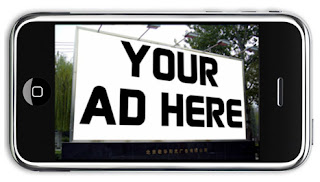Marketers have many choices to location enable a campaign based on campaign objectives. In most of the cases Location Based Marketing campaigns are leveraging Location Based Social Media but besides that there are several different ways to promote the product or service making use of location and mobile device:
1. Location Based Social Media:
Presence in Location Based Social Media including services like Foursquare, Facebook Places or Twitter gives possibility for a two-way communication and direct contact with the customer.
2. Check-in Based Contests and Games:
Reward the user (typically with discounts or coupons) for visiting retailer locations and “checking in”. LBS are used to verify that the consumer was at or near the retailer location at the time the consumer is checking in.
3. Geo-targeted Text and Display Advertising:
The paid placement of a promotion or sponsorship message within mobile media that is integrated with LBS. Two types of targeting are common:
a. User Targeting:
Advertisers who wish to only reach users in a certain geographic area can use this type of targeting.
b. Message Targeting:
Presenting a different message to users based on their location.
4. Embedded Icons:
(Sponsored embedded advertising) the sponsorship deals can be map-embedded or on-the-page/in-app. Sponsored embedded advertising that displays without a search term but is based on end-user’s interests and/or brand affinity. Icons or logos displayed in maps or augmented reality to help user determine relevant proximity/location.
5. Local Search Advertising:
Advertising for listings of local merchant retailers. For example, CitySearch, Dex, YellowPages all fit in this category. Generally these campaigns will include some form of user targeting to show listings only to users in a relevant geographic area.
6. Location Triggered Notifications:
Uses proximity information (Wi-Fi, Bluetooth, GPS or Network-based) to provide App Alerts or Messaging based on user preferences and opt-ins. These services can be automated (vs. requiring a check-in or app) and can run on both smart and feature phones. Once opted-in, alerts are delivered whenever a consumer is nearby a store, and can be tailored to a specific location (e.g. incorporating address or directions) and an offer specific to that nearby store.
7. Location Branded Application:
The usage of LBS technology to enhance brand-owned mobile media services. Media brands are the most ardent supporters of these apps.
8. Click-to-X Routing:
Routing either calls, data from broad campaigns to local call centers or localized information. For example a nationwide auto dealer might use LBS to route calls from a nationwide click-to-call campaign to the nearest local auto dealer based upon the consumer’s precise location.
source: Mobile Marketing Association







